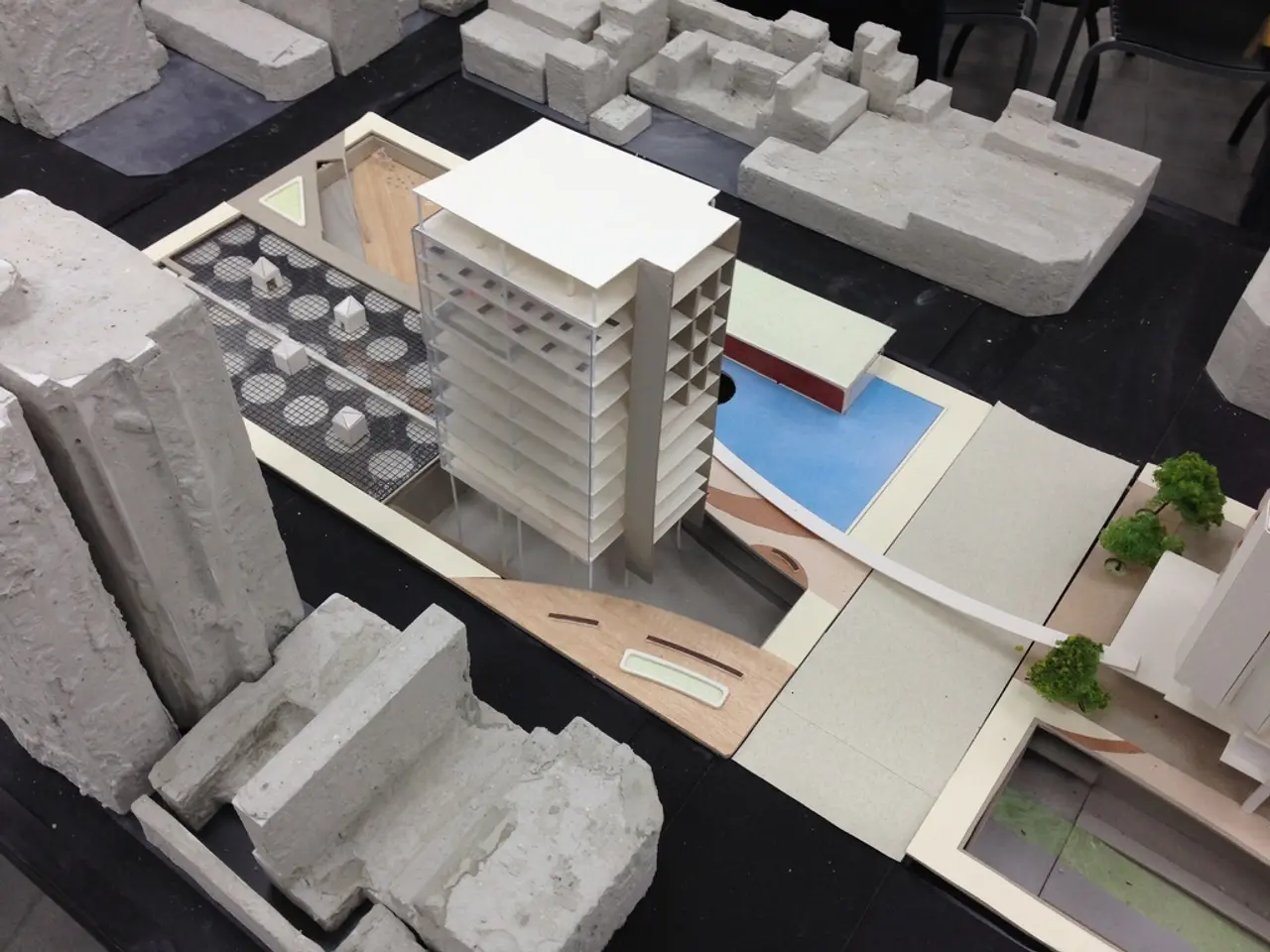Specialized School: Focus on Stone and Synthetic Materials
===============================================================================
In the world of contemporary architecture, a new construction method is gaining attention for its sustainability, efficiency, and aesthetic appeal: hybrid stone buildings. This innovative approach combines the timeless strength of stone with other materials to create structures that are not only durable but also environmentally friendly.
Hybrid stone buildings can be disassembled for reuse, promoting sustainability, and extending their lifecycle. Engineering constraints in this construction lead to lighter, more resource-efficient structures. These buildings are best suited for mid-rise buildings, up to about eight stories, making them an ideal choice for urban developments.
One of the key advantages of hybrid stone construction is material efficiency. By limiting stone use to its most effective applications, this method reduces the volume of dense materials like stone, making it a more sustainable option.
Prefabrication is another advantage of hybrid stone construction. The process is friendly to prefabrication, allowing for better planning, coordination, and quality control. This efficiency leads to improved logistics, with faster, more streamlined assembly on-site.
The processing and installation of stone require very little water, making this method more water-efficient compared to traditional construction methods. Stone also requires very little energy for extraction and processing when used as a load-bearing material.
Contemporary hybrid stone construction typologies generally fall into combinations of vertical stone columns or shear walls, steel and concrete systems, and augmented stone floor slabs. For instance, stone is used structurally as load-bearing vertical components, paired with lighter materials like timber or cross-laminated timber (CLT) for floors and roofs.
Other typologies include stone facades integrated with glass, metal, and wood, providing a modern, biophilic design. These combinations leverage stone’s durability and compressive strength with other materials’ lightness, tensile strength, and aesthetic qualities.
However, it's important to note that not all engineers or quantity surveyors are familiar with hybrid systems, complicating cost management and risk evaluation. Clients need to understand that the design process is slower and more iterative, but on-site construction is significantly faster. Construction teams working on hybrid stone buildings must be trained in working with a diverse range of materials.
In summary, hybrid stone construction offers a promising future for sustainable and efficient construction. By organising materials hierarchically for maximum performance, this method enables architects to utilise stone’s strengths effectively while addressing modern construction needs for sustainability, prefabrication, and hybrid performance.
[1] Contemporary Architectural Practice, 2022. Hybrid Stone Construction: A Sustainable Approach to Modern Building.
[3] Journal of Sustainable Construction, 2021. Hybrid Stone Facades: A Case Study in Biophilic Design.
- Incorporating sustainable living practices, home-and-garden enthusiasts might find appeal in the reduced material usage and water efficiency of hybrid stone construction, as discussed in Contemporary Architectural Practice, 2022.
- Technology plays a crucial role in hybrid stone construction, particularly in prefabrication, improving logistics and enabling architects to optimize the performance of materials like stone, as highlighted in Journal of Sustainable Construction, 2021.






